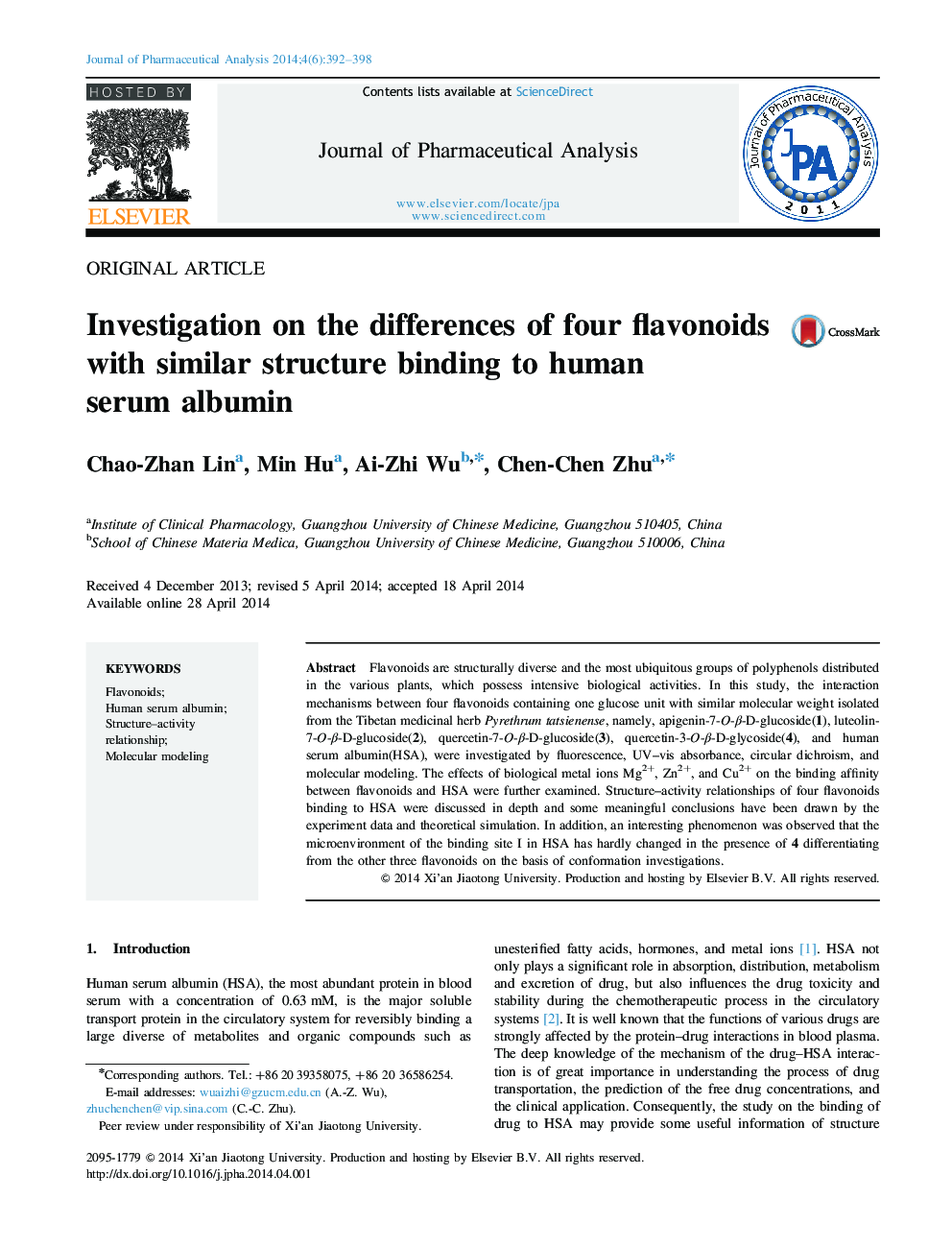| Article ID | Journal | Published Year | Pages | File Type |
|---|---|---|---|---|
| 2507835 | Journal of Pharmaceutical Analysis | 2014 | 7 Pages |
Flavonoids are structurally diverse and the most ubiquitous groups of polyphenols distributed in the various plants, which possess intensive biological activities. In this study, the interaction mechanisms between four flavonoids containing one glucose unit with similar molecular weight isolated from the Tibetan medicinal herb Pyrethrum tatsienense, namely, apigenin-7-O-β-D-glucoside(1), luteolin-7-O-β-D-glucoside(2), quercetin-7-O-β-D-glucoside(3), quercetin-3-O-β-D-glycoside(4), and human serum albumin(HSA), were investigated by fluorescence, UV–vis absorbance, circular dichroism, and molecular modeling. The effects of biological metal ions Mg2+, Zn2+, and Cu2+ on the binding affinity between flavonoids and HSA were further examined. Structure–activity relationships of four flavonoids binding to HSA were discussed in depth and some meaningful conclusions have been drawn by the experiment data and theoretical simulation. In addition, an interesting phenomenon was observed that the microenvironment of the binding site I in HSA has hardly changed in the presence of 4 differentiating from the other three flavonoids on the basis of conformation investigations.
